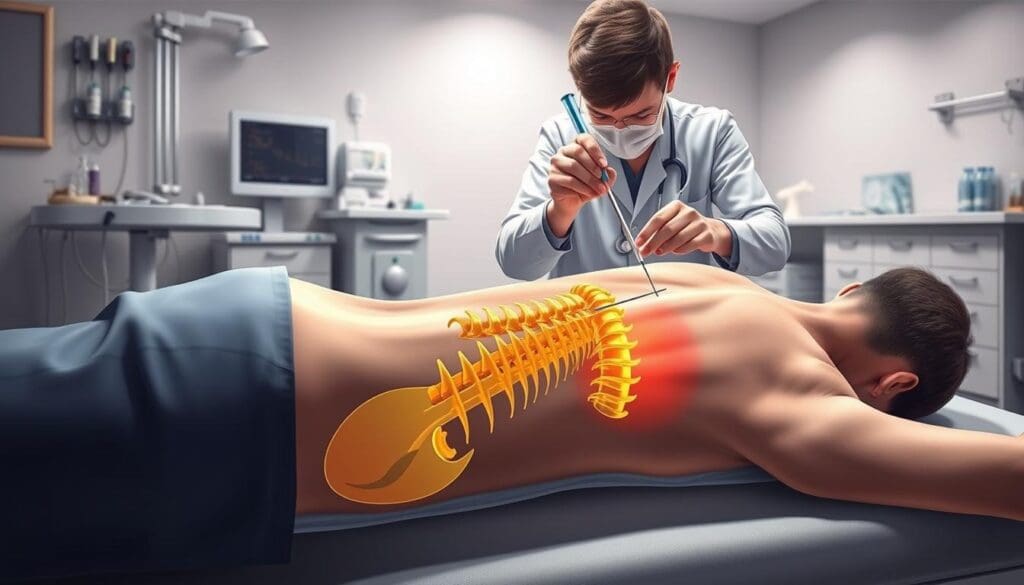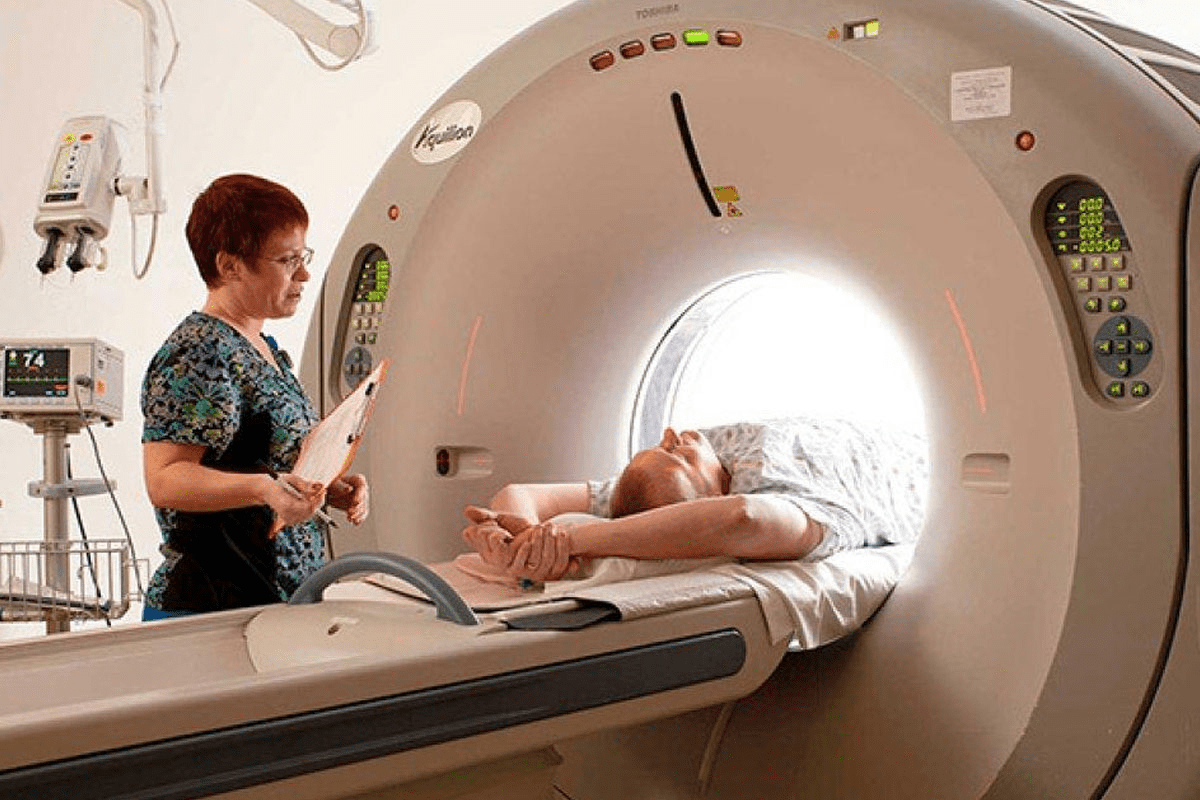Last Updated on November 26, 2025 by Bilal Hasdemir

Best position to sleep after epidural steroid injection is an important question for anyone recovering from back or neck pain. At Liv Hospital, we understand that proper sleep posture plays a major role in healing and reducing discomfort.
After getting an epidural steroid injection, sleeping in a position that keeps your spine straight and supported can greatly improve your recovery. It not only helps manage pain but also promotes better blood flow and reduces inflammation.
We’ve prepared simple tips to help you find the best sleeping position after an epidural injection so your body can rest, recover, and heal smoothly.
Key Takeaways
- Maintain spinal alignment while sleeping to support recovery.
- Choose a sleeping position that alleviates pain and discomfort.
- Use supportive pillows to maintain proper spinal alignment.
- Avoid sleeping on your stomach to prevent unnecessary strain.
- Experiment with different positions to find what works best for you.
Understanding Epidural Steroid Injections and Recovery

It’s important to know about epidural steroid injections for pain relief. We’ll look at what they are, why they’re used, and what happens right after.
What Is an Epidural Steroid Injection?
An epidural steroid injection is a minimally invasive procedure. It involves putting corticosteroids near the spinal cord. This helps reduce inflammation and pain in the neck, back, or legs.
The injection goes into the epidural space, a fat-filled area around the spinal cord. This targets the inflamed areas directly. It provides relief without the side effects of oral steroids.
Common Reasons for Getting an Epidural Injection
Epidural steroid injections help with many spinal issues. These include:
- Herniated discs
- Spinal stenosis
- Degenerative disc disease
- Spondylolisthesis
- Radiculopathy (pain along a nerve path)
These problems can cause a lot of pain and discomfort. The injections aim to reduce pain and inflammation. This helps with recovery and improves function.
Immediate Post-Procedure Effects
After an epidural steroid injection, patients may feel different things. Some common feelings are:
- Soreness at the injection site: This is usually mild and short-lived.
- Relief from pain: Pain relief can start right away or take a few days.
- Flushing or hot flashes: Some may feel these due to the steroid.
Following your doctor’s post-procedure care is key. It helps with a smooth recovery and the best results.
Why Sleep Position Matters After Your Injection

After getting an epidural steroid injection, how you sleep is very important. The position you choose can affect your spinal alignment, pain, and comfort. It’s key to your recovery.
Impact of Sleep Position on Recovery
Recovering well after an epidural steroid injection is important. Sleeping in the right position can help you feel less pain and heal faster. Proper sleep positioning can reduce strain on the affected area, which may lower pain and aid in a smoother recovery.
- Reduces strain on the spine and affected area
- Promotes better spinal alignment
- Can help in managing post-procedure pain
Spinal Alignment Considerations
Keeping your spine aligned while sleeping is vital. It helps prevent extra strain on your spine. This is very important in the early stages of recovery.
To keep your spine aligned, consider these tips:
- Choose a supportive mattress that keeps its shape and offers good support.
- Use pillows wisely to support your body, focusing on the injection site.
- Stay away from twisting or bending, as it can mess up your spinal alignment.
Pain Management Through Proper Positioning
Managing pain is a big part of recovering after an epidural steroid injection. The right sleep position can help a lot. By reducing pressure on the affected area, you might feel less pain while you’re recovering.
Here are some tips for managing pain through sleep positioning:
- Avoid positions that put direct pressure on the injection site
- Use pillows to support your body and lessen strain
- Try different positions to find what feels most comfortable
Best Position to Sleep After Epidural Steroid Injection
After getting an epidural steroid injection, it’s key to find the right sleep position. This helps you heal better and manage any pain. The sleep position you choose can greatly affect your recovery.
Lying on Your Back: The Optimal Position
Sleeping on your back is often the best choice after an epidural steroid injection. To make it even better, put a pillow under your knees. This does several things:
- It reduces strain on your lower back
- It helps keep your spine aligned
- It lessens any discomfort or pain
Keeping your spine neutral helps your body heal faster. Also, a pillow under your knees takes pressure off your spine.
Side-Sleeping Techniques
If you sleep on your side, there are ways to make it more comfortable and safe. Try these:
- Put a pillow between your knees to align your hips and ease lower back strain
- Choose a supportive mattress that keeps its shape well
- Avoid curling up or twisting, which can stress your spine
Using these side-sleeping tips can help reduce pain and support your recovery.
Positions to Avoid
Some sleep positions can make recovery harder, while others can help. After an epidural steroid injection, it’s best to steer clear of:
- Sleeping on your stomach, as it can misalign your spine
- Twisting or curling up, which adds stress to your spine
- Positions that cause you a lot of pain or discomfort
Staying away from these positions can make your recovery smoother and more comfortable.
5 Practical Tips for Comfortable Sleep After Epidural Injection
Getting a good night’s sleep is key after an epidural steroid injection. It helps your body heal faster. Here are some tips to help you sleep better.
Tip 1: Use Supportive Sleep Accessories
Choosing the right sleep accessories is important. Look for a supportive mattress and pillows that keep your spine aligned. A body pillow can also offer extra support and comfort.
Tip 2: Practice Proper Entry and Exit from Bed
Getting in and out of bed can be tough after an epidural. Move slowly and carefully to avoid discomfort. Use the “log roll” technique to roll onto your side and then push up to a sitting position, keeping your back straight.
Tip 3: Time Pain Medication Strategically
Timing your pain medication right can help manage pain at night. Talk to your doctor about when to take it for the best effect during your sleep.
Tip 4: Create an Optimal Sleep Environment
Having a sleep-friendly environment is key. Make sure your bedroom is cool, dark, and quiet. Use blackout curtains, earplugs, or a white noise machine if needed. Choose comfortable bedding and keep electronic devices out of your room.
| Tip | Description | Benefit |
| Use Supportive Sleep Accessories | Invest in a supportive mattress and pillows | Maintains proper spinal alignment |
| Practice Proper Entry and Exit from Bed | Use the “log roll” technique | Minimizes discomfort when getting in and out of bed |
| Time Pain Medication Strategically | Consult your doctor about medication timing | Manages pain during the night |
| Create an Optimal Sleep Environment | Keep the bedroom cool, dark, and quiet | Improves sleep quality |
By following these tips, you can improve your sleep after an epidural steroid injection. This will help your recovery be smoother and more comfortable.
Managing Cortisone Injection Sleeplessness
Cortisone injections can mess with your sleep. This is because of how your body reacts to the steroid. It can also be due to any discomfort or pain after the shot.
Why Steroid Injections Can Disrupt Sleep
Steroid shots are good for reducing pain and swelling. But, they can make you feel more awake and alert. This can make it hard to sleep well or stay asleep.
Temporary vs. Prolonged Sleep Disturbances
It’s important to know if sleep problems are short-term or last longer. Short-term issues usually go away in a few days. But, if you keep having trouble sleeping, it might be a bigger problem.
Natural Remedies for Better Sleep
There are natural ways to help you sleep better after a cortisone shot. Here are a few:
- Start a calming bedtime routine
- Make your bedroom a sleep-friendly space
- Stay away from caffeine and screens before bed
- Try gentle stretches or relaxation exercises
These can help lessen the sleep problems caused by cortisone shots.
When to Consult Your Doctor About Sleep Issues
If you can’t sleep well and it’s affecting your daily life, talk to your doctor. They can help figure out how to improve your sleep. They might change your treatment or suggest other ways to help you sleep better.
Recovery Timeline: How Long Should You Rest After Epidural Steroid Injection
Knowing how long it takes to recover after an epidural steroid injection is key. It helps manage your expectations and ensures a smooth healing. The recovery time can change based on your health, the condition being treated, and where the injection was given.
First 24 Hours: Critical Rest Period
The first 24 hours after the injection are very important. You should not do much and avoid hard movements. Resting in a comfortable position helps reduce pain and aids in healing. You should:
- Avoid heavy lifting and bending
- Limit walking and standing to short periods
- Refrain from driving or operating heavy machinery
Days 2-7: Gradual Return to Activities
After the first 24 hours, you can start doing more. But, listen to your body and don’t do too much too soon. You can do light walking and gentle stretching. But, avoid:
- High-impact exercises
- Bending or twisting motions
- Lifting heavy objects
Long-term Recovery Considerations
The full effects of the injection may take weeks to show. Keep an eye on your symptoms and talk to your doctor about any changes. Follow-up appointments are important to check how well the treatment is working and plan the next steps.
By knowing the recovery timeline and following the guidelines, you can improve your chances of a good outcome.
What to Do and What to Avoid After an Epidural Injection
The time after an epidural steroid injection is key. Knowing how to handle it can greatly improve your recovery. It’s important to be careful about what activities you do and avoid to get the best results.
Recommended Post-Injection Activities
After your epidural steroid injection, gentle activities are best. Gentle stretching and short walks help keep you moving without hurting your back. Also, stay hydrated and follow your doctor’s instructions about medicine and rest.
- Gradually increase your activity level as comfort allows
- Use ice or heat as recommended by your healthcare provider to manage discomfort
- Keep follow-up appointments to monitor your progress
Activities and Movements to Avoid
It’s also key to know what not to do while recovering. Heavy lifting, bending, and strenuous exercise should be avoided for a few days, or as your doctor says. Also, avoid sitting or standing for long periods without taking breaks.
- Avoid driving or operating heavy machinery if you’re taking narcotic pain medication
- Refrain from soaking in a bathtub or hot tub until your doctor advises it’s safe
- Limit activities that involve twisting or jarring movements
Monitoring for Complications
Though rare, complications can happen after an epidural steroid injection. Watch for signs of infection like increased pain, redness, swelling, or fever at the injection site. If you notice any of these or have concerns, contact your healthcare provider immediately.
By following these tips and staying informed, you can lower the risk of complications and get the most from your epidural steroid injection. Remember, your healthcare provider is your best source for personalized advice and care during your recovery.
Special Considerations for Different Injection Sites
Epidural steroid injections vary in location, affecting sleep and recovery. The injection site impacts how the body responds and recovers. Knowing this can help in choosing the right sleep positions and recovery strategies.
Cervical Epidural Injections
Cervical injections are in the neck, treating neck pain or herniated discs. Those with cervical injections should be careful with their neck during sleep. A supportive pillow is key to keeping the neck aligned.
- Use a contoured pillow or a cervical pillow to support the neck.
- Avoid sleeping on your stomach as it can cause the neck to be twisted.
- Consider using a soft, rolled towel under the neck for additional support.
Thoracic Epidural Injections
Thoracic injections are in the mid-back, less common than others. Those with thoracic injections should keep their torso stable during sleep. Sleeping on your back with a pillow under your knees can help.
- Sleep on your back with a pillow under your knees to reduce pressure on your spine.
- Avoid twisting or bending, which can be achieved by using a body pillow for support.
Lumbar Epidural Injections
Lumbar injections are in the lower back, treating lower back pain and sciatica. For lumbar injections, keeping the lower back’s natural curve during sleep is key. A supportive mattress and a pillow under the knees when sleeping on the back can help.
- Use a medium-firm mattress to support the lower back.
- Place a pillow under your knees when sleeping on your back to reduce strain.
Hip Injections and Sleep Positioning
Hip injections are not epidural injections but are sometimes included in pain management. For hip injections, avoiding direct pressure on the injected hip during sleep is important. Sleeping on the opposite side with a pillow between the knees can help.
“Proper sleep positioning after epidural steroid injections or hip injections can significantly impact the recovery process, reducing discomfort and promoting healing.”
Understanding the needs for different injection sites helps patients recover better. It ensures a more comfortable and effective healing process.
Conclusion
The recovery after an epidural steroid injection is key to getting the best results. Finding the best position to sleep after epidural steroid injection is important. It affects your comfort and how well the treatment works.
By using the tips from this article, you can have a more comfortable recovery. This includes using supportive sleep accessories and creating a good sleep environment. Knowing what to do after an epidural steroid injection is also vital. It helps manage pain and prevent problems.
At our institution, we help patients recover well. We give them the right guidance and care. By sleeping right and following post-procedure advice, you can get the most out of your epidural steroid injection. This leads to a more comfortable and active life.
FAQ
What is the best position to sleep after an epidural steroid injection?
Sleep on your back with a pillow under your knees. This keeps your spine aligned and eases discomfort.
How long should you rest after an epidural steroid injection?
Rest for at least 24 hours after the injection. Slowly get back to normal activities over the next few days.
Are you put to sleep for a hip injection?
No, hip injections are usually done under local anesthesia. This helps keep you comfortable during the procedure.
What to do after an epidural steroid injection?
Rest, apply ice to the area if needed, and follow your doctor’s advice on medication and activities.
What not to do after an epidural steroid injection?
Avoid heavy lifting, bending, and strenuous activities for a few days. Also, don’t soak in a bathtub or hot tub for 24 hours.
Why do steroid injections cause sleeplessness?
Steroid injections can lead to sleeplessness due to the body’s reaction and side effects like anxiety or jitteriness. Discomfort or pain can also play a role.
How can I manage sleeplessness after a cortisone injection?
Use relaxation techniques, stick to a sleep schedule, and make your sleep area comfortable. If sleep issues last, talk to your doctor.
Can I take pain medication before bedtime after an epidural steroid injection?
Yes, taking pain medication before bed can help manage pain and improve sleep quality.
Are there specific sleep accessories that can help after an epidural steroid injection?
Yes, using supportive sleep accessories like a pillow under your knees can help maintain spinal alignment and reduce discomfort.
When should I consult my doctor about sleep issues after a steroid injection?
If you have persistent or severe sleep problems, talk to your doctor for help and advice.
References
- Smuck, M., et al. (2020). Negative affect and sleep disturbance may be associated with worse clinical outcomes after epidural steroid injections for low back pain. Archives of Physical Medicine and Rehabilitation, 95(2), 323–330. https://pubmed.ncbi.nlm.nih.gov/24060493/
- Tang, Y., & Smith, A. (2015). Safe use of epidural corticosteroid injections. Pain Physician, 18(6), E879–E887. https://www.ncbi.nlm.nih.gov/pmc/articles/PMC7379698/






